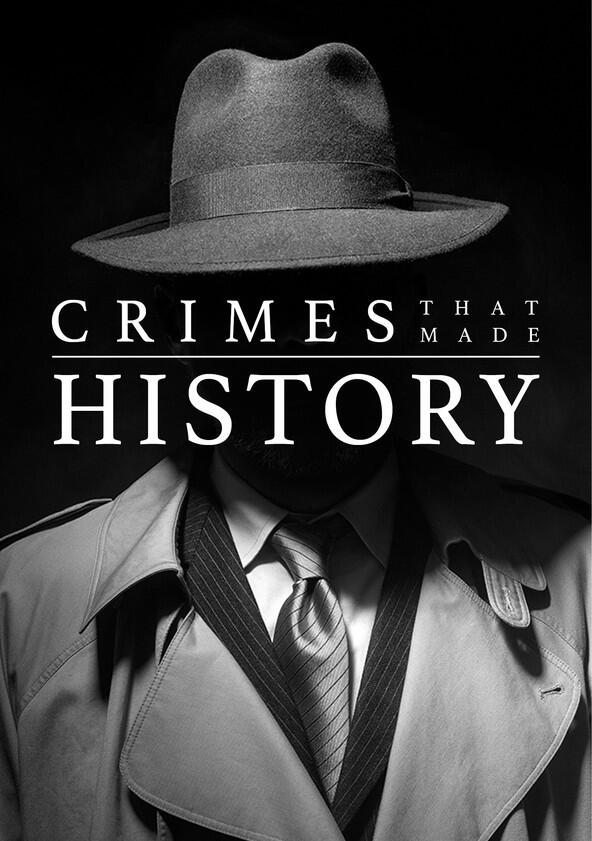Crimes That Made History - Season 1

Season 1

Episodes

Jack the Ripper: The Invention of the Serial Killer (1888)
In 1888, a series of gruesome murders shocked London: The perpetrator was dubbed "Jack the Ripper". This was the Victorian era, when puritanism reigned and forensic science was in its infancy. How did these factors combine to create one of the most renowned crime stories in history, resulting in the construction of the serial killer?

Albert Soleilland: A Case for the Death Penalty (1907)
Paris, January 1907. Albert Soleilland is accused of the rape and murder of a little girl - Marthe. The press details every step of the case as if it was a show. As early century France was on the verge of abolishing the death sentence, that infamous crime set the abolitionist cause back decades - the media massively and eagerly asked for his execution.

Fritz Haarmann: Vampire in the Weimar Republic (1924-31)
In 1924 Hanover, the discovery of a hundred bones catches the authorities' attention. The press covers the case and a suspect - Fritz Haarmann - is quickly arrested. The heinous crimes committed by the one they now call "the vampire" remind people of the Great War's traumas and announce the rise of Nazism. Cruelty, sexual violence, cannibalism in the fragile Weimar Republic.

The St. Valentine's Massacre: Gang Rule in America (1929)
In 1929, seven members of Bugs Moran's gang are assassinated in a garage by Al Capone's henchmen. This event was taken up by the press who named it the "Saint Valentine's day Massacre". Carried out during the prohibition, those killings became the newsworthy symbol of gang wars - they consolidated the image of the Italian mobster in the American collective imaginary.

Violette Nozière: The Patricidal Poisoner (1933)
In August 1933, Violette Nozière, 18, killed her father by poisoning in Paris. After a short period on the run, she was charged with murder and swiftly confessed to the crime, saying her motive was that he abused her. The press and public were immediately fascinated by this patricidal teenager, who became known as "the monster in the skirt".

Abe Sada: The Fantasy of Japanese Eroticism (1936)
On May 18th 1936, Abe Sada killed her lover by "erotic asphyxia" then cut off his member and carved his name in her flesh. In a very militarized Japan, the press was very interested in this crime with erotic and transgressive accents. News of this crime spread a made up image of Japan to the West - one where love and sexual urges are liberated.

Roswell: Back to the UFO (1947)
On 8 July 1947, the US Air Force announced the discovery of a "flying disc" which had crashed in the Roswell area of New Mexico. This was the birth of the flying saucer phenomenon. Against the backdrop of the Cold War, when conspiracy theories abounded, the myth of the UFO gradually took shape to become a recurrent theme in science-fiction movies and popular culture.

Flight 571: Acceptable Face of Cannibalism (1972)
On October 1972, an Uruguayan plane crashed into the Andes. 72 days later, 16 survivors are found! The incredible rescue fascinated the media across the world. How did they survive? An unspeakable truth gradually emerges: to survive, the survivors ate their dead comrades' bodies.

The Jonestown Massacre: An American Apocalypse (1978)
1978 Guyana: Reverend Jim Jones holds an apocalyptic mass. Its outcome was the sacrifice of 918 members of the Peoples Temple - an American cult founded in the middle of the 1950s. The entire world was horrified by the journalists' accounts and the images from Jonestown. This tragedy haunted the hopes of small communities and alternative spiritualities in the 70s.

The Death of Princess Di (1997)
On 31 August 1997, Princess Diana died alongside her companion, Dodi Al-Fayed, in a car crash in Paris, whilst being pursued by paparazzi. Her untimely death prompted an outpouring of grief in Britain and elsewhere in the world, and made her a symbol of the excesses of media intrusion, that was ironically echoed in the coverage of her funeral, broadcast live around the globe.
Recently Updated Shows

Invasion
Earth is visited by an alien species that threatens humanity's existence. Events unfold in real time through the eyes of five ordinary people across the globe as they struggle to make sense of the chaos unraveling around them.

Peacemaker
This James Gunn-created series continues the saga of Peacemaker, a vainglorious superhero/supervillain who believes in peace at any cost — no matter how many people he has to kill. After a miraculous recovery from his duel with Bloodsport, Peacemaker soon discovers that his freedom comes at a price.

48 Hours
48 Hours is a CBS news magazine that investigates intriguing crime and justice cases that touch on all aspects of the human experience. Over its long run, the show has helped exonerate wrongly convicted people, driven the reopening -- and resolution -- of cold cases, and changed numerous lives. CBS News correspondents offer an in-depth look into each story, with the emphasis on solving the mystery at its heart. The program and its team have earned critical acclaim, including 20 Emmys and three Peabody Awards.

Wednesday
Smart, sarcastic and a little dead inside, Wednesday Addams investigates a murder spree while making new friends — and foes — at Nevermore Academy.

Shifting Gears
Shifting Gears centers on Matt, a stubborn, widowed owner of a classic car restoration shop. When Matt's estranged daughter and her teenage kids move into his house, the real restoration begins.